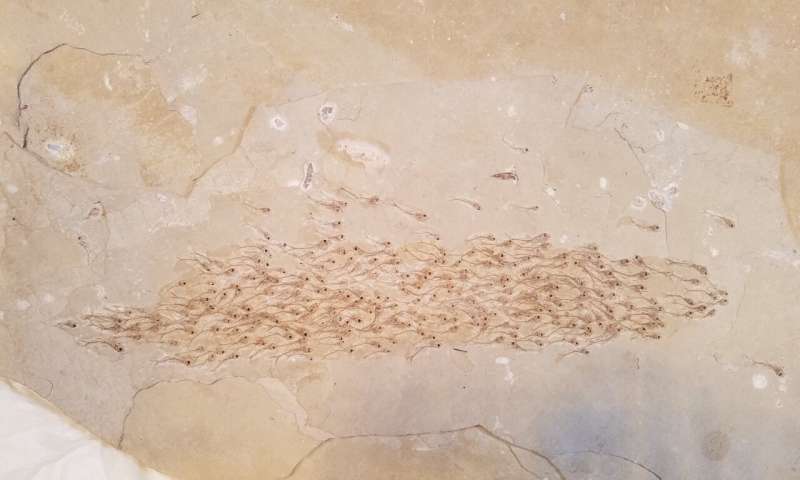According to a new study produced by researchers from Arizona State University and the Oishi Fossils Gallery of Mizuta Memorial Museum in Japan, fish swam in schools 50 million years ago, indicating that the “shoaling” practice of many fish is an ancient behavior.
Using a fossilized slab of rock that formed during the Eocene Epoch and collected in the United States, researchers were able to infer that, even in prehistoric times, some fish species traveled through water in shoals. The fish preserved in the rock, Erismatopterus levatus, appear to be a minnow-like fish that is now extinct. According to the study, the rock was found in what, during the Eocene, was a shallow lake.
Today, many fish species school or “shoal” in lakes and oceans, largely for protection from predators. Many biologists think the mass of fish makes a shoal look less like prey for predators and more like a single, larger animal. According to the new study’s researchers, the new report “highlights the possibility of exploring the social communication of extinct animals, which has been thought to leave no fossil record.”
It also gives biologists some insight into how long this behavior has been used by fish, particularly fish that are often targeted as prey by other fish and fish-eating predators, like whales, birds, seals and sea lions.
“Inferring behavior from fossils of these fish is a valuable source of information about the evolution of shoaling, considering that almost all species in Percopsiformes, including E. levatus, are extinct,” the report reads. “By applying our approach not only to other fossilized fish groups but also to other taxa whose fossils of mass mortality can be found (e.g. shrimp, mammals and dinosaurs), we can better understand palaeoecology and achieve the reconstruction of the evolutionary process behind coordinated collective motion.”



